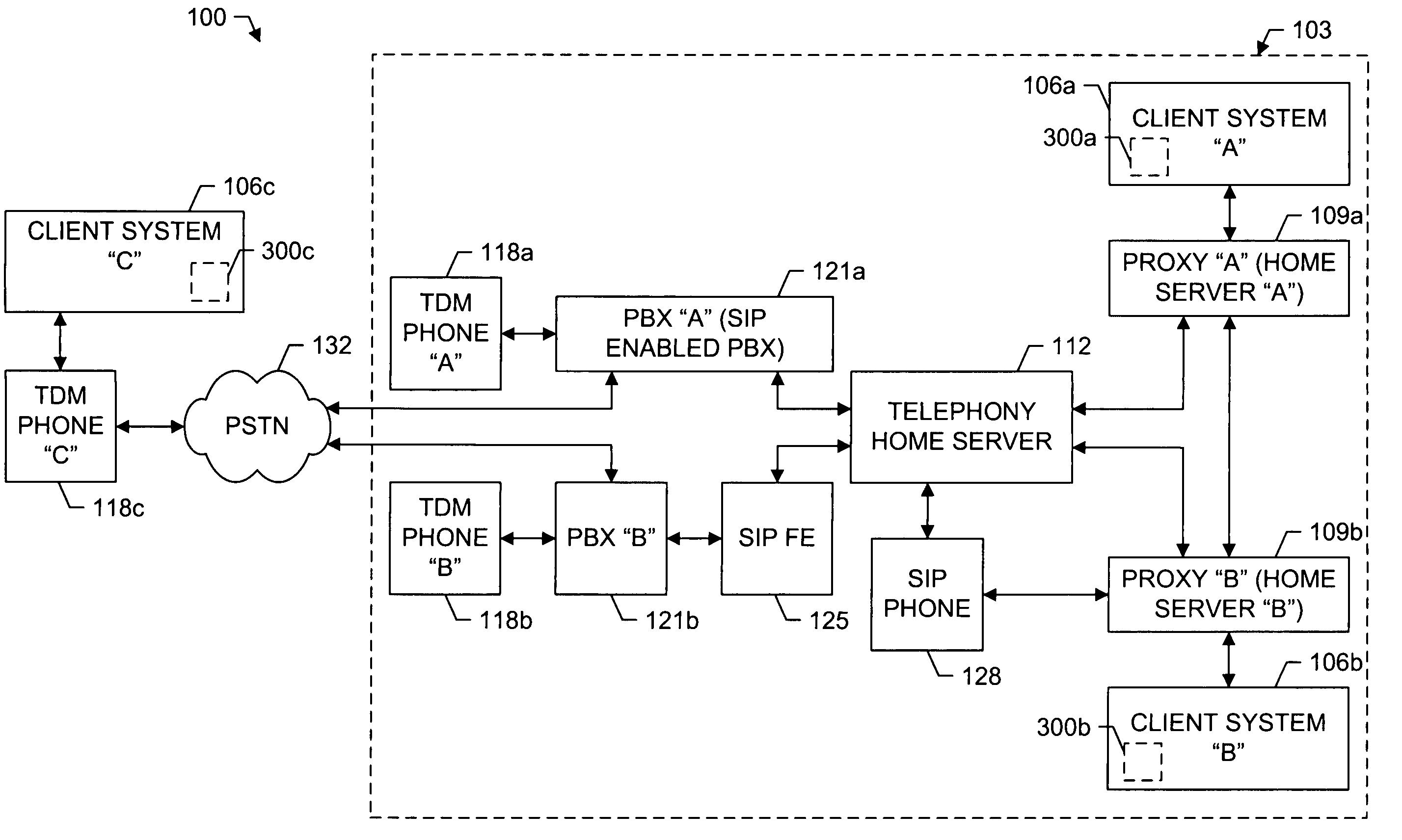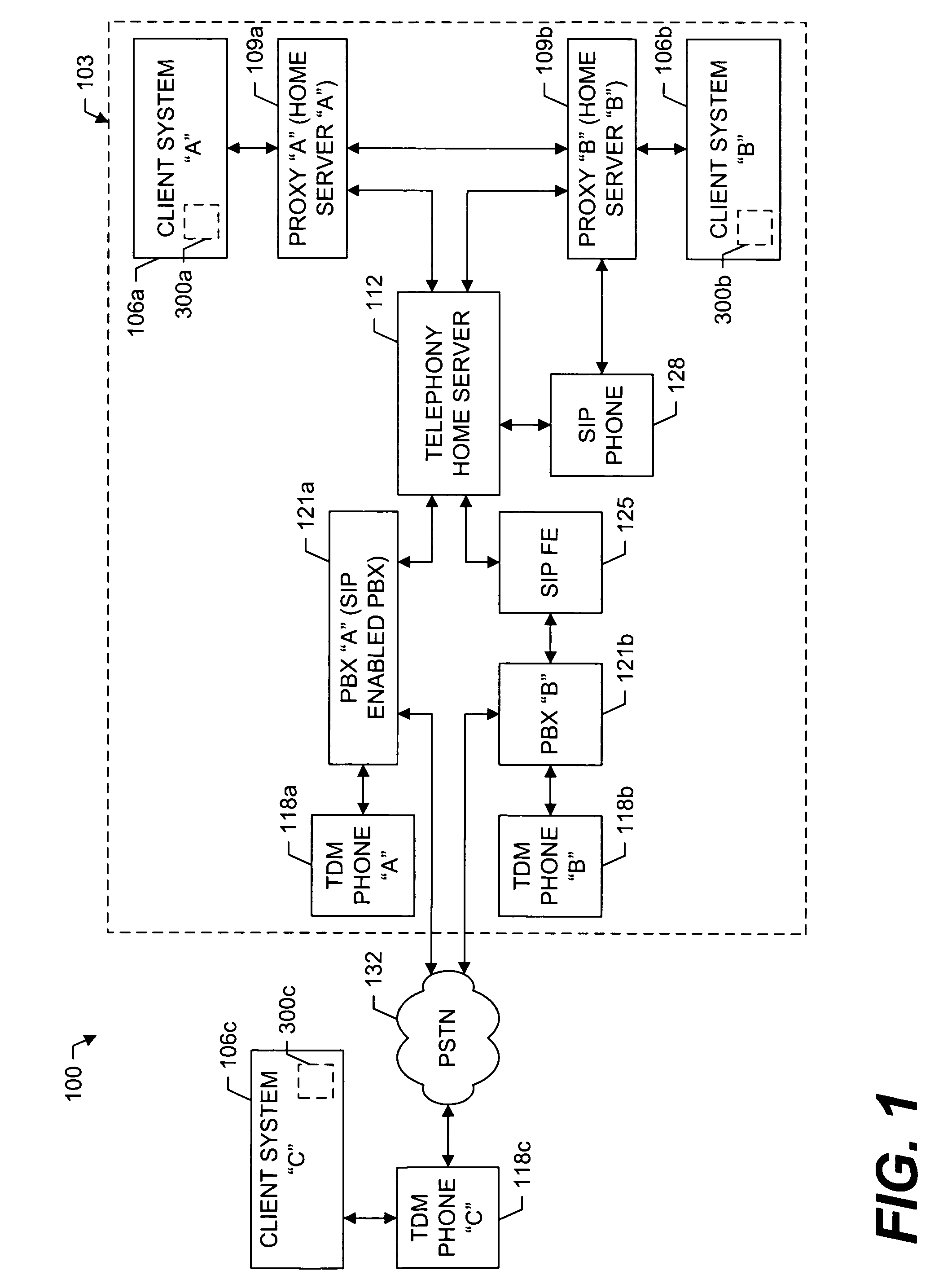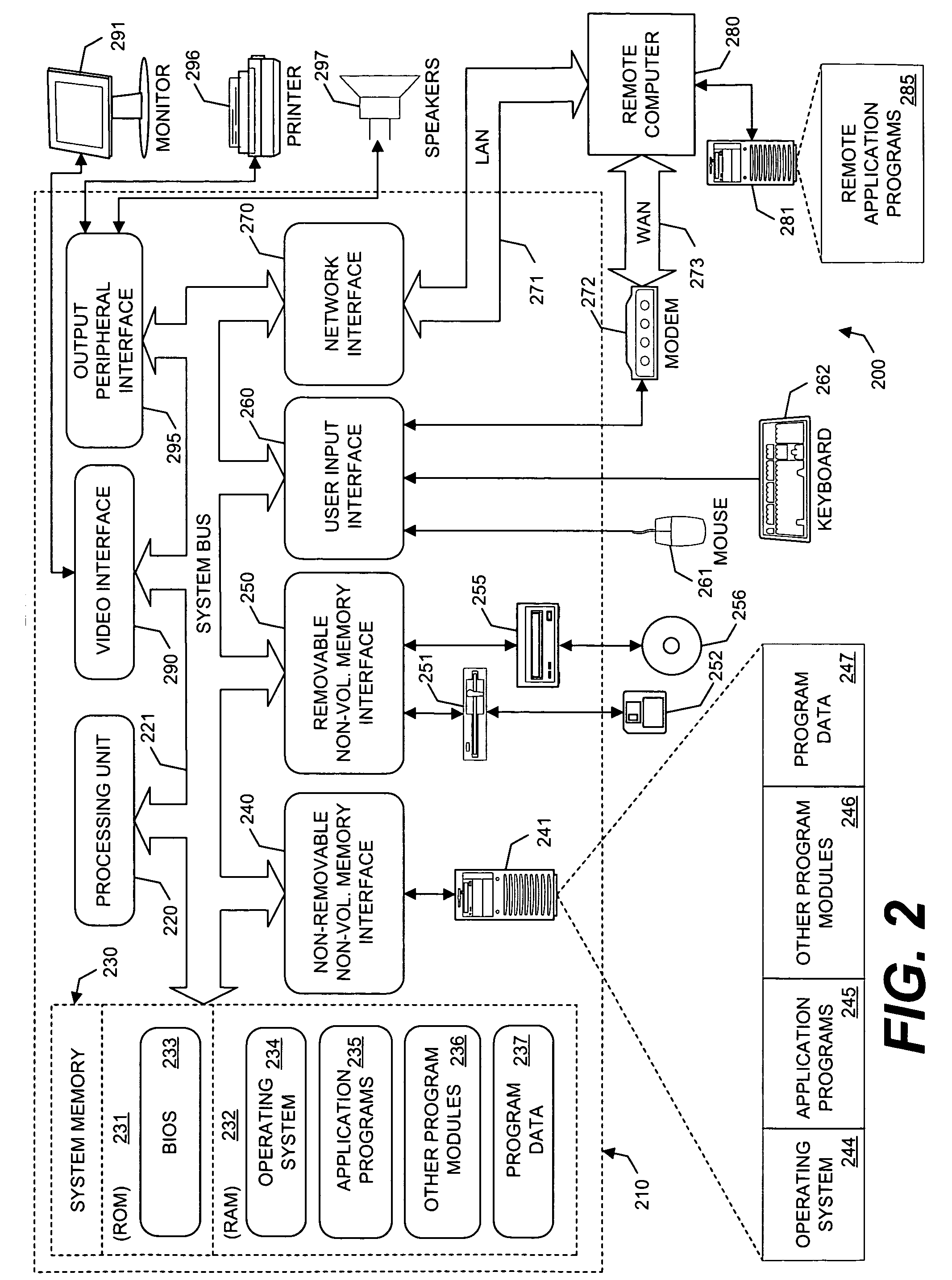System and methods for facilitating third-party call and device control
a third-party call and device control technology, applied in the field of third-party call and device control systems and methods, can solve the problems of few third-party call control solutions widely implemented, limiting the evolution of enhanced services and data interfaces, and not supporting third-party call control in prior public switched telephone networks (pstns), so as to facilitate communication and effectively manage the complex situations involved.
- Summary
- Abstract
- Description
- Claims
- Application Information
AI Technical Summary
Benefits of technology
Problems solved by technology
Method used
Image
Examples
Embodiment Construction
[0019] Referring now to the drawings, in which like numerals represent like components or steps throughout the several views, FIG. 1 displays a block diagram representation of an environment 100 for third party call control system 300 in accordance with an exemplary embodiment of the present invention. The environment 100 comprises a plurality of client systems 106 that include hardware and software components similar to those found in well-known computing systems, environments, and / or configurations described more fully below with reference to FIG. 2. Each client system 106 comprises a third-party call control system 300 residing thereon. Typically, multiple client systems 106a, 106b reside within a network sub-hierarchy 103 of a domain name system (DNS) name space. One skilled in the art will recognize that a network sub-hierarchy 103 typically comprises the infrastructure and facilities appropriate to communicatively connect a group of two or more client systems 106 (including, w...
PUM
 Login to View More
Login to View More Abstract
Description
Claims
Application Information
 Login to View More
Login to View More - R&D
- Intellectual Property
- Life Sciences
- Materials
- Tech Scout
- Unparalleled Data Quality
- Higher Quality Content
- 60% Fewer Hallucinations
Browse by: Latest US Patents, China's latest patents, Technical Efficacy Thesaurus, Application Domain, Technology Topic, Popular Technical Reports.
© 2025 PatSnap. All rights reserved.Legal|Privacy policy|Modern Slavery Act Transparency Statement|Sitemap|About US| Contact US: help@patsnap.com



